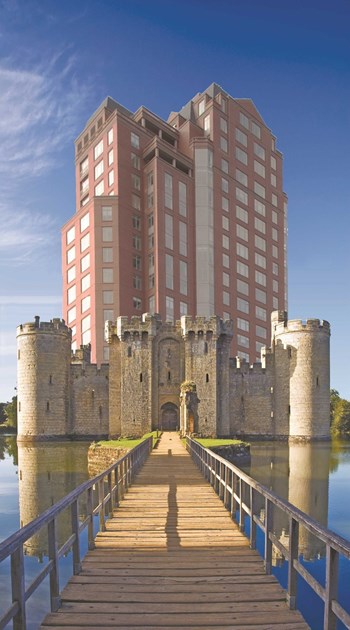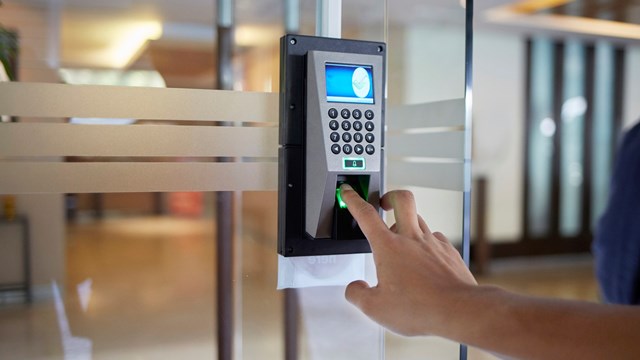
In terms of building security, boards today are in a tricky position. They are obliged to protect the residents, their property and offer the same quality of life just as they did prior to the great economic belly flop of the 21st Century. The problem is, however, they have less cash to do so.
So, why not just cut some security fat from your condo, co-op, and HOA budgets? Two words: liability lawsuit. As Tim O’Brien, president of the Criminal Intelligence Administration in Astoria, points out, “if you thought the need existed before the recession . . . Say you have a CCTV [closed circuit TV] and you get rid of it, or don’t maintain it, you can be held liable if something goes wrong,” he says. “A civil liability case could cost the building one to ten million dollars.” Even if your condo or co-op wins the case, that’s still a lot of money spent on legal fees, and a hassle that could have been avoided with a relatively low-cost camera repair.
While crime rates are down in New York City and most surrounding areas, no board would want to find themselves responsible for an on-site mugging or vandalism in the halls. The Building Code requires the most basic security measures, such as deadbolts and peepholes, but who's to say a building does not require measure beyond that such as cameras or retinal scanners.
So, now they’ve got you. Despite the lauded reduction in crime, cutting back, relaxing, or not maintaining existing security measures could still get your building into serious trouble, even if your board complies with the bare bones legal requirements for safety and security. The board needs to protect residents and their property, but also the building or the association from taking serious financial hits. To do this: if your building doesn't have a security plan, you need one. But if it already does, then revisiting your plan might expose the areas where you can cut costs.
The Plan
When it comes to building security plans, Des Smyth, president of SecureWatch24 (SW24) in New York City, cautions communities not to scale back on security measures because of a visible or statistical decreases in neighborhood crime.
"The steady decline in crime New York City has enjoyed over the last decade is the result of pro-active, preventative measures put in place to minimize criminal activity,” says Smyth. “In order to maintain low crime rates, [communities] must continue to implement measures that have proven effective and develop new tactics that will further deter crime before it happens.”
Chad Parris, senior consultant for Security Risk Management Consultants, Inc., Columbus, Ohio recommends, however, an analysis of neighborhood crime data to gain an understanding of what’s happening in your neighborhood and in similar buildings. Talk to your neighbors, local business owners, board members from other buildings. Has there been a string of break-ins in a similarly-sized building down the street? What security measures have surrounding buildings taken?
Knowing the existing threat level in your neighborhood will help you better decide the necessary precautions. As O’Brien points out, a condo on Park Avenue has less of a crime threat than one in East New York, Brooklyn. Security needs are dependent on many varying factors and the surrounding neighborhood is one of them.
“Every property has different needs and challenges,” says Smyth. “However, managers can assess that threat level to develop an effective security system that addresses your needs.”
Another place to turn for information is the NYPD’s website. The site hosts crime reports from every precinct and this can give boards a clearer picture of security threats. Consult with local law enforcement professionals.
A law enforcement official could provide you with valuable insight about your neighborhood and its risks. The size of the building should also be considered when assessing risk. A multiple building complex, for example, has a lot more ground to cover than an eight-unit condo. And that is why many larger building communities might need to consider a uniformed security patrol.
In addition to assessing the building’s vulnerabilities, the initial assessment should consider your building’s assets. Do you have a moat?
“In a condo,” says Parris, the biggest asset “is usually people.” Ultimately, fellow community residents are a great resource to building security.
Implementation & Security Tools
Once the board has assessed the building’s strengths and weaknesses, the second step is to implement the mitigation plan.
Some buildings may only need physical access control, like keys and locks. Also, enhanced lighting might be the only necessary upgrade. Remember, burglars love to hide in shadows and behind potted plants. A little light could keep the bad guys out in the streets.
According to Smyth, the simplest security measures can be the most effective.
"While often overlooked, the easiest and most cost-effective way to help secure your property is to provide ample lighting throughout the building and its perimeter,” he says. “Lighting is proven to deter criminal activity, and maximizes the effectiveness of any other security measures that are in place. Used in conjunction with high-quality access control and surveillance systems, any property can provide a level of safety to its tenants without breaking the bank.”
Another option is closed circuit TV.
“CCTV has its pro’s and con’s,” says Parris. “Positively, it may deter crime and help residents feel safer, say getting out of their cars in a parking structure. But sometimes there’s an expectation of security, but no one’s watching until after a crime has been committed. So, it reactive.”
Unless someone is watching the monitors at the precise moment that the crime is committed, illegal activity may go unhindered. But, CCTV could lead to an arrest after the fact. For this reason and others, cameras are a very popular security tool.
“Cameras don’t call in sick or have bad days,” says Bob Tucker, a Boca Raton, Florida-based spokesperson for electronic security company ADT. As an upgrade from CCTV, ADT offers digitally-recordable DVR cameras, which can record constantly or be set on a motion trigger. Tucker points out that cameras can lead to the catching and prosecution of a criminal. They may not deter a crime in progress like an on-duty guard, but they will at least provide hard evidence.
ADT offers additional security services as well, depending on your building’s needs and budget. To decide what might work best for you, they conduct a free initial security assessment. Possibilities include everything from electronic key card access to a monthly monitoring service. The company has four monitoring call centers, each staffed by 300–400 people, that dispatches law enforcement personnel if an alarm is tripped. According to Tucker, this service can save buildings 15 percent on their business insurance.
Cameras, enhanced lighting, and electronic key cards are all suitable security measures that buildings have used for some time now, but as mentioned above, communication is crucial. A newsletter or email to residents explaining precautions and outlining the security plan can get everybody on the same page. If neighbors know each other, they might be better able to recognize strange activity. Take for example the success of many neighborhood watch programs. There is strength and solidarity in numbers.
One community is trying something a little different for its security needs in forming the Coalition for a Better Washington Square Park.
This community, which is made up of area co-op boards and NYU, has been trying to establish a coalition to safe guard the neighborhood surrounding Washington Square Park from acts of delinquency and vandalism prevalent after hours.
“It's basically a group of concerned residents who want to see that the park is well maintained and a secure environment,” says Adelaide Polsinelli, a broker with Marcus & Millichap and the board president of the Two Fifth Avenue co-op community. “I represent 3,000 residents that feel that the park has never been safe and could be safer.”
Without city official or government support, the budding organization has considered alternatives such as hiring security, hiring off-duty cops through the NYPD’s Paid Detail Unit, or “pep squads” to patrol and perform additional responsibilities-- modeling the Business Alliance's approach to community security.
“Washington Square Park has drug dealers setting up shop in the park. They're very prevalent, and they're very outspoken," says Polsinelli. "The police do their best to arrest, but the laws don't keep them in jail. The next day they're back in the park dealing again. I believe that if we had more of a police presence, which obviously budget cuts won't allow for that, or some [additional] security present it might deter them from being so blatant about it.”
The community surrounding Washington Square Park demonstrates the importance of security and are cognizant of how quickly things can slide into a crime zone. You don’t have to look too far back in history to remember neighborhoods swallowed up by crime. An abandoned building becomes a haven for drug use. Cars are broken into, and vandalism becomes rampant. The point is, security is always best handled proactively rather than reactively—after crime gets a foothold.
Additional Security Hazards
When we think of building security hazards, we typically think of crime and dangers caused by other people. But there are other threats to a building’s security, such as fire and carbon monoxide.
Keeping a building safe from fire means routinely testing fire alarms and making sure you keep up with maintenance. Make sure that stairwells and fire exits are clear, and that exit pathways are secure from the outside but provide egress from the inside.
O’Brien recommends bringing in a fire marshal or other outside fire prevention specialist to assess the potential risks to the building and help design a fire safety plan.
Some companies like ADT offer services that send simultaneous messages to each resident’s emails, cell phones, and homes, in case of emergency.
“When you can communicate information in a timely way,” says Parris,“ [residents] are able to make better decisions.”
But that doesn’t necessarily mean you need an electronic emergency messaging service that are invariably expensive. The point of is to remember the importance of developing, maintaining and reassessing a security program and the existing situation in your neighborhood to find most efficient ways to say safe.
Communication is the key. That means discussing your security program and measures with residents and making it clear to them what to do in case of an emergency. Some buildings send out newsletters or emails, some bring in specialists to speak at board meetings. Open communication before a problem arises is probably the best resource any condo, co-op, or HOA has and, fortunately, it’s also the cheapest.
Brendan Flaherty is a freelance writer living in Brooklyn.






Leave a Comment